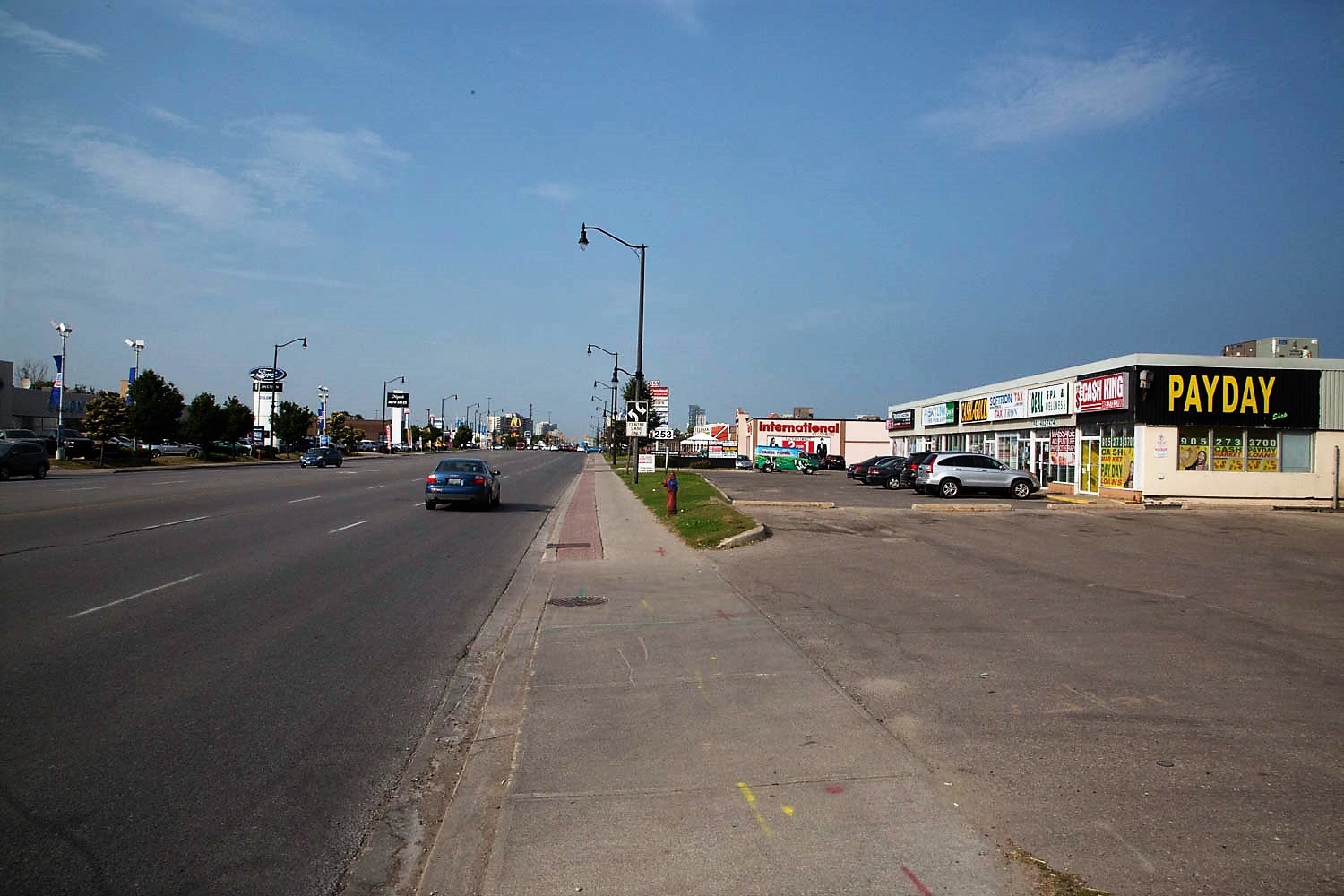
A new vision to recreate the heart of the city
A packed chamber at Wednesday’s Planning and Development Committee meeting was buzzing with optimism. On tap for discussion was a project that could, if seen through to fruition, change the cityscape in an area known for inefficient and unattractive land use. The city has been undertaking a study of the Queen Street Corridor, an area designated by the province as Brampton’s urban growth centre.
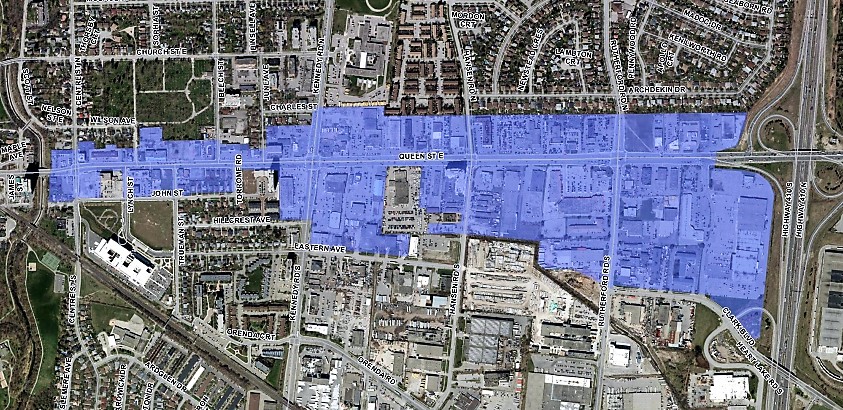
City's study area
The corridor is a stretch of low-density, mostly low-rise commercial development surrounded by single-family homes between Highway 410 and Etobicoke Creek, which cuts through the downtown. City hall believes the area is ripe for redevelopment that would reshape it as a denser, more vibrant, more transit-oriented, walkable and liveable streetscape. The goal is to transform it with more high-rise buildings and mixed uses — including office space, retail properties and residential buildings — once background work is completed.
“Overall, Queen Street has changed little since I was young, other than there is an additional lane for car drivers [and] many driveway cuts that make it very challenging for anyone who is walking or cycling,” planning and transit advocate Chris Drew, 36, said in a speech to councillors. “The patterns of buildings, the heights, the types of uses, the range of uses on Queen Street have basically not changed, other than about three condo developments.” Drew’s presentation described a common view of the sprawling, low-slung area that provincial planners have designated for a complete urban overhaul. It currently represents the worst of post-war suburban built form.
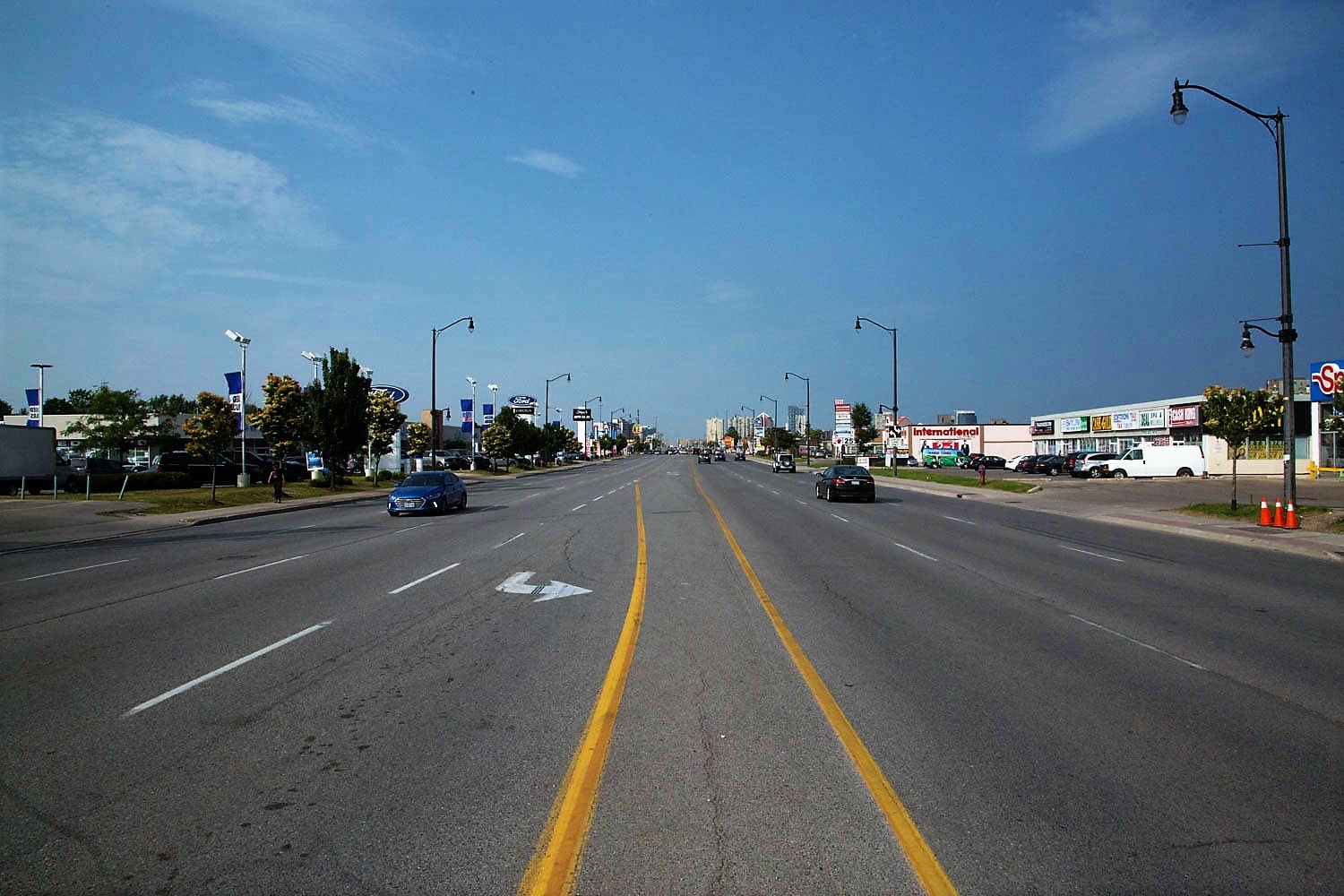
A bleak streetscape is what visitors pass through right into downtown Brampton
At any given moment, more cars appear to be on the road than people on the sidewalks. The car-centric design of the area makes driving the best option along the two-kilometre corridor. It offers little variety in amenities such as shops and restaurants, meaning pedestrians need to walk great distances to find what they’re looking for. Commercial sections consist mostly of cookie-cutter, low-rise strip malls.
A seemingly monochrome cityscape and dense sign pollution — an overabundance of signs that spoil the aesthetics — give the area a generally ugly quality. It’s little wonder the street is one of the least-walked parts of Brampton.
Consulting company WSP has been spearheading a study to see what changes could help turn the corridor into a jewel of urban planning. WSP senior project manager Bobby Gauthier told councillors that zoning in the area “permits low-rise commercial uses. And that, of course, represents a risk. It could inhibit the achievement of this very ambitious vision for this corridor.”
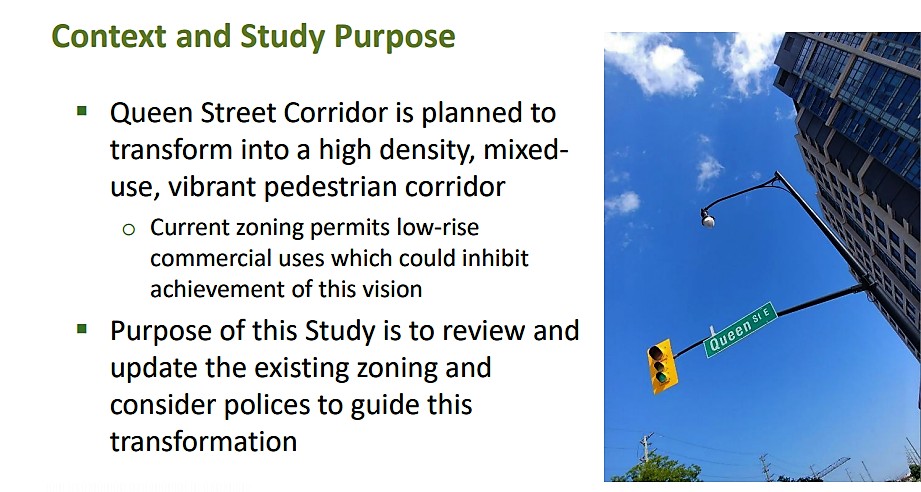
The company’s recommendations include rezoning the area to encourage intensification and a greater mix of uses, with a motion to be brought forward this fall. For Brampton, it’s a case of better late than never. The province has been pushing for smart-growth planning since at least 2006, under then premier Dalton McGuinty. That government passed the Growth Plan for the Golden Horseshoe Area, a set of comprehensive guidelines for accommodating future growth across the region more sustainably.
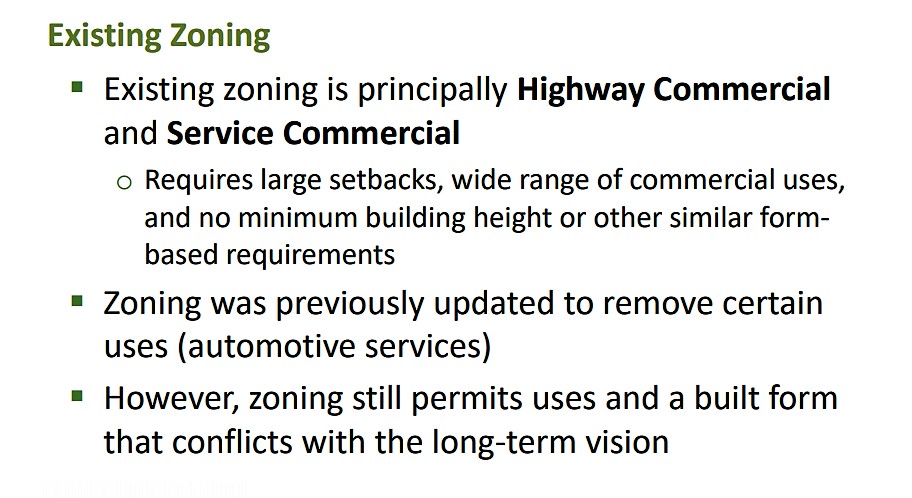
It was introduced through the Places to Grow Act (2005), in which an area roughly equivalent to the Queen Street Corridor study zone, but stretching farther west to McLaughlin Road, is designated as the Urban Growth Centre for Brampton. It calls for much higher density to accommodate anticipated population growth, serve as a major employment centre, facilitate efficient transit and spark the creation of a variety of public amenities.
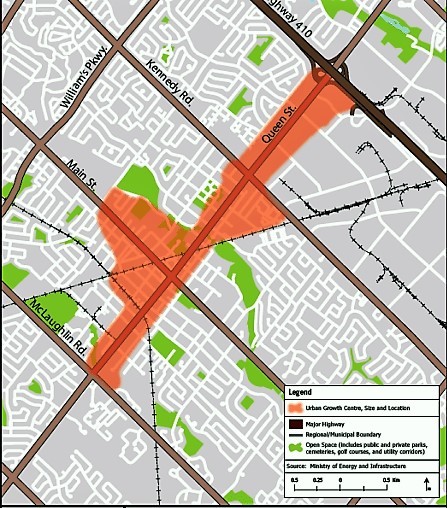
Province's designated Urban Growth Centre
In Brampton, the new plan calls for accommodating at least a combined 200 residents and jobs per hectare. The provincially designated UGC runs between McLaughlin and Highway 410 along Queen Street, including the downtown Etobicoke Creek area.
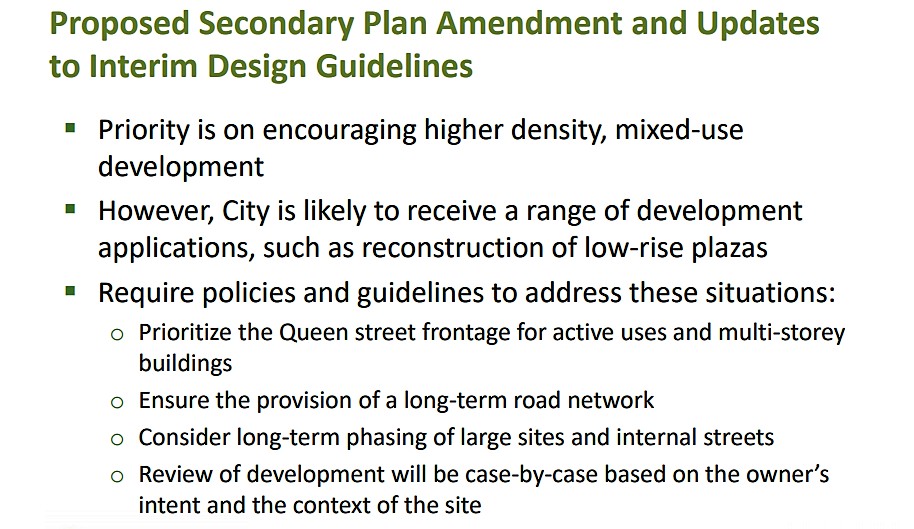
The growth plan, internationally heralded as a model of long-range sustainable planning, was largely ignored under the administration of former mayor Susan Fennell, who was widely seen as friendly to developers’ own ideas of how and where they’d like to build. Under her 14-year leadership, sprawl and short-sighted planning favouring single-family homes were woven into the fabric of Brampton’s identity, almost as emblematic of the city as its slogan, the Flower City.
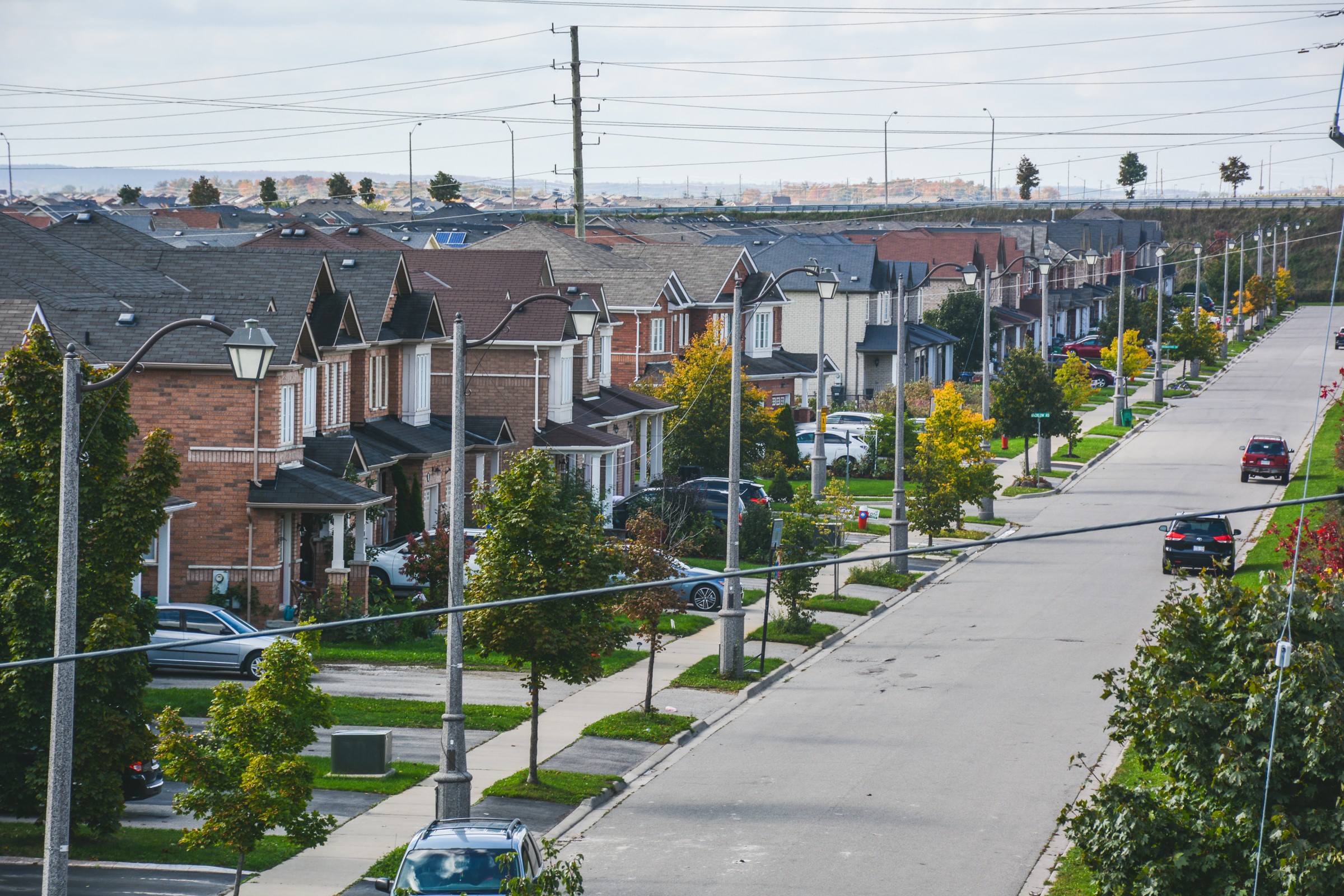
Her successor, Linda Jeffrey, took a different tack. Under her leadership, the city introduced a Secondary Plan Amendment Review that would update and modernize growth plans for 54 designated areas in the city. The chair of this term’s planning committee, Martin Medeiros, once a close ally of Jeffrey, appears to be continuing that legacy alongside vice-chair Pat Fortini.
Medeiros believes the long gap between provincial mandate and municipal follow-through was the result of financial problems. “There has always been talk of funding the corridor. We finally put funds towards actually looking at it, [but until now] I think it was a financial issue,” he told The Pointer. He agreed that “we are trying to play catch-up” at this stage.
Building for higher populations not only reduces sprawl but makes many parts of urban infrastructure, including efficient transit such as light rail, more financially feasible. “Density is really what [allows] the transportation system to be self-sufficient and sustainable. We don’t have the density, we don’t have the ridership,” Medeiros said.

Councillor Martin Medeiros, chair of planning
The Queen Street plan could fly in the face of some developers who have already assembled land around the city’s edges, to continue the sprawling subdivision pattern of growth that has reduced density and made things such as higher-order transit planning difficult. But the transformative 2040 Vision plan, adopted as the growth policy by the previous council and supported by the current one, represents a radical shift from Brampton’s past.
Brampton’s overall population density, about 2,230 people per square kilometre (22.3 people per hectare), appears to be on the higher end compared to similarly sized cities. Hamilton, which expanded in 2001 to amalgamate five neighbouring municipalities with large rural tracts, is relatively sparse overall, with 465 people per square kilometre. Mississauga is slightly denser than Brampton at 2,440; and Toronto, three times the size of Brampton with its own sprawling suburbs, has almost twice Brampton’s density, with 4,150 people per square kilometre.
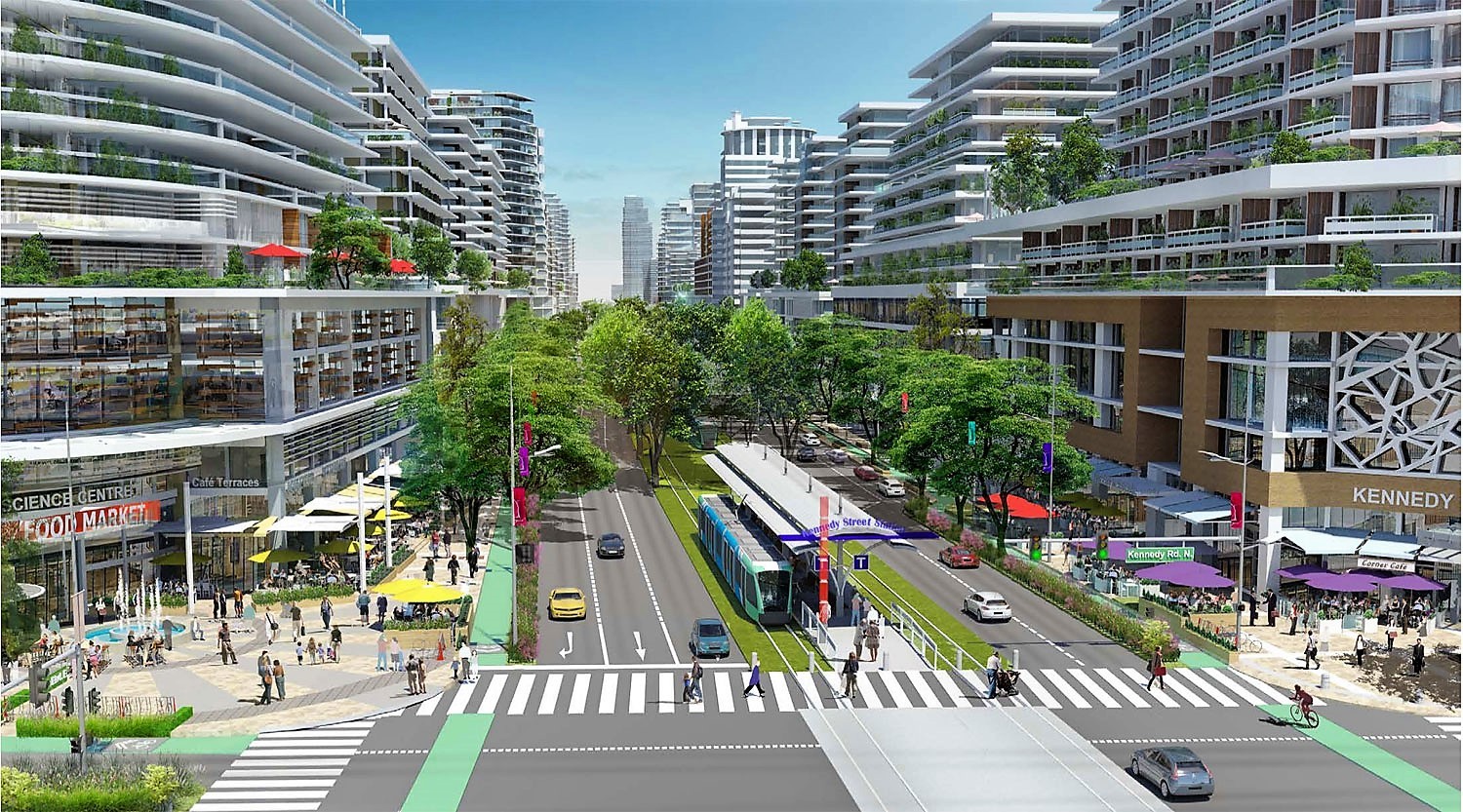
A rendering of the Queen Street corridor in the 2040 Vision document
Meanwhile, some U.S. cities whose populations hover around Brampton’s number are denser than even Toronto. Boston crams 5,344 people into a square kilometre, and San Franciscans seemingly live shoulder to shoulder with 7,272 other people within the same footprint.
The largest European cities, which have had a headstart on densification by hundreds of years, easily outpace the largest U.S. city, New York. Paris, Barcelona and Athens all have densities above 40,000, creating vibrant environments that attract tourists and stimulate economies.
A study by economists from the U.S. Federal Reserve Bank of New York and the Universities of Georgia and Maine, titled Productivity and the Density of Human Capital, found that density plays a significant role in the productivity of residents. Doubling the density of a city can increase individual productivity by 2 to 4 percent. The most productive city in the U.S. generated on average more than $114,000 in output per worker, more than triple that of the least productive, at $35,000.
Email: [email protected]
Twitter: @mansoortanweer
Submit a correction about this story


